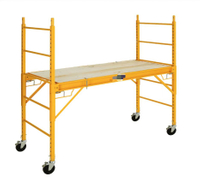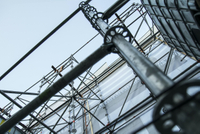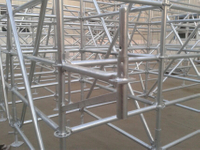What is Scaffolding?
Scaffolding is a temporary construction platform made of wood, steel, or aluminum. It is commonly used in new construction, maintenance, infrastructure projects, bridges, ships, airports, petrochemical facilities, and various other environments. Scaffolding not only facilitates smooth progress in construction projects but also ensures the safety of construction workers.
Scaffolding Types
Scaffolding not only needs to be safe and reliable but also cost-effective and easy to install and dismantle. Due to the diversity of construction projects and environments, as well as the varying safety regulations in each country, scaffolding is divided into many different types. Below is a detailed introduction to them:
Wooden and Bamboo scaffolding
Throughout the history of scaffolding development, wooden and bamboo scaffolds were among the earliest types utilized by humans. This was primarily due to the less advanced economic conditions, where wood and bamboo were the most easily accessible resources in nature. With the advancement of modern scaffolding, only some components such as walk boards or toe boards still use wooden materials, while other parts have been replaced by steel or aluminum materials.
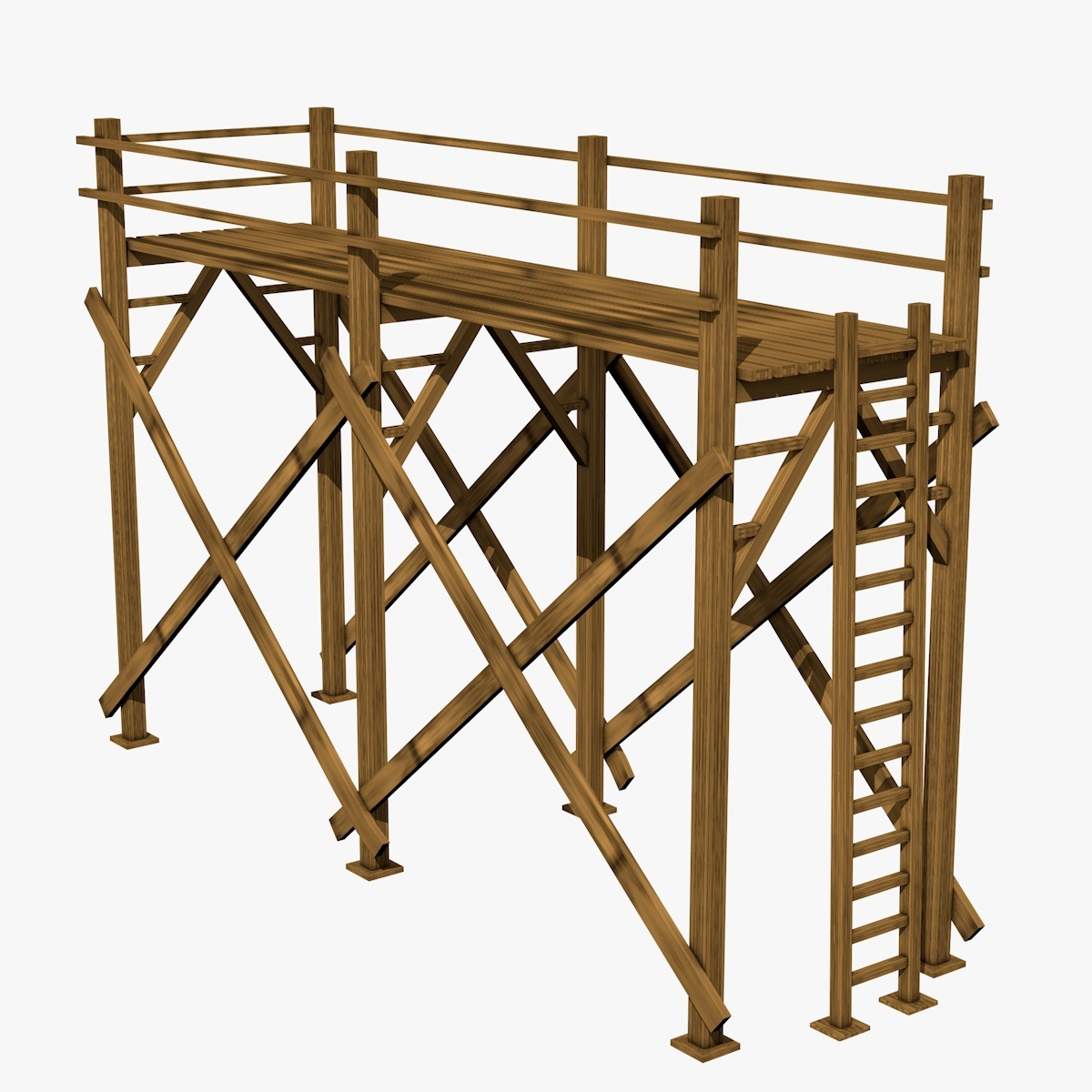
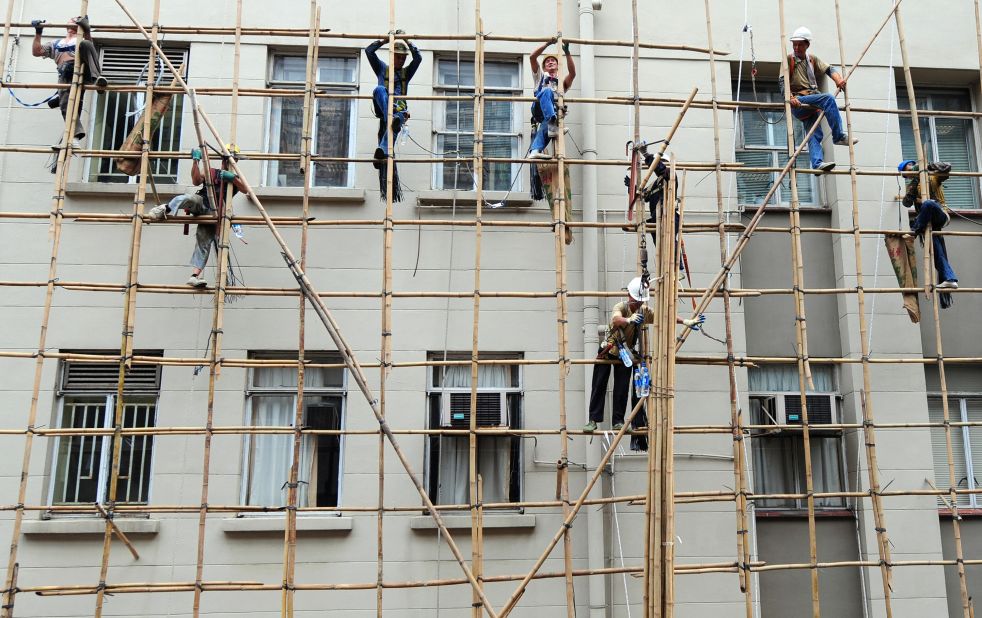
Bamboo scaffolding is still in use in certain regions of Asia. To construct bamboo scaffolding, pieces of bamboo are tied together with nylon straps. These bamboo pieces are repeatedly bound together to form multiple vertical squares of about 75 cm x 75 cm until they cover the building structure .
Bamboo structures serve as both working and climbing platforms for workers and as supports for buildings. Their advantages include being lightweight, efficient, cost-effective, environmentally friendly, easy to install and dismantle. However, their disadvantages include not being as strong and safe as steel or aluminum scaffolding, making them unsuitable for use in some large construction projects.
System Scaffolding
Due to the advancement of modern scaffolding, steel and aluminum scaffolds have gradually replaced wooden and bamboo scaffolds. The most commonly used type is system scaffolding, which mainly includes the following types:
*Ringlock Scaffolding
The ringlock system scaffold is one of the most widely used modular scaffolds in industries. It is mainly available in steel or aluminum materials. The primary components include ledgers, standards, diagonal braces, base plates, screw jacks, steel planks, side brackets, stairways, and more. They are interconnected by assembling ledger ends into the ringlock rosettes on standards and securing them with wedges.
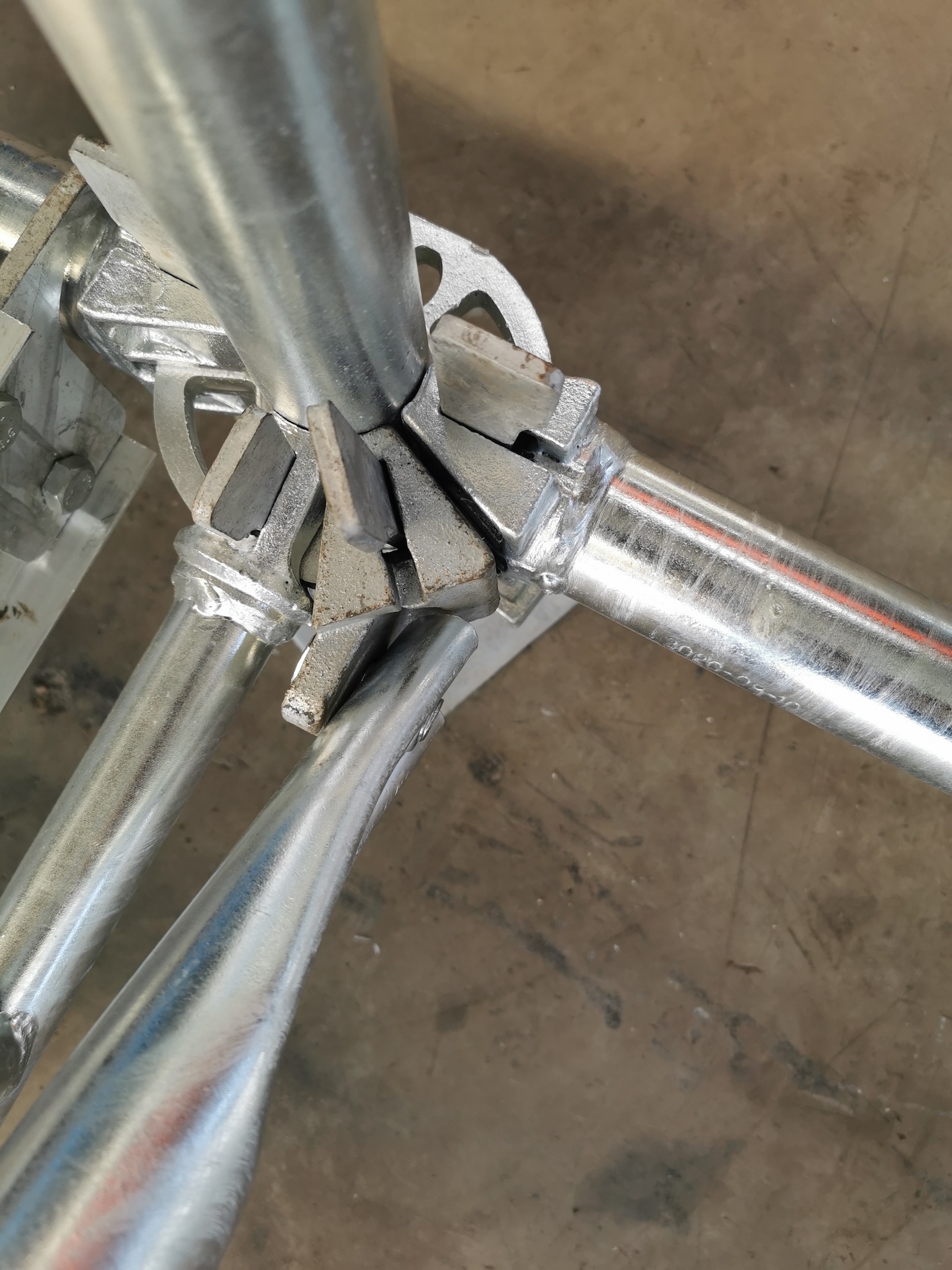
Applications of the ringlock system scaffold include:
1. Construction projects
2. Bridge construction and maintenance in infrastructure projects
3. Shipbuilding and repairs
4. Mining industry
5. Refineries and chemical plants
6. Offshore projects such as wind farms, oil rigs, or natural gas platforms
7. Staging for events and venues
Advantages of the ringlock system scaffold:
1. Flexibility and versatility to adapt to various applications
2. Easy installation and dismantling, saving construction time
3. Convenient for transportation, maintenance, and storage
4. Strong load-bearing capacity, making it ideal for large projects
5. Durable and resistant to environmental factors due to hot-dip galvanization.
*Cuplock Scaffolding
The cuplock system scaffolding, like the ringlock system, is one of the most commonly used system scaffolds. It is mainly made of steel. The primary components include ledgers, standards, diagonal braces, base plates, screw jacks, steel boards, brackets, stairways, and more. They are interconnected by inserting the blade ends of ledgers into the upper and lower cups of standards and securing them in place.
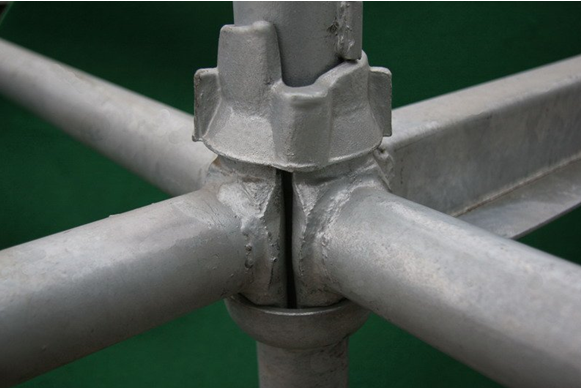
The applications of the cuplock system are very similar to the ringlock system, suitable for various projects, offering flexibility, ease of installation and dismantling, transportation, and maintenance benefits. In the Middle East region, painting is commonly used for surface treatment. However, hot-dip galvanization remains the preferred choice for surface treatment.
*Kwikstage Scaffolding
The kwikstage system scaffold, also known as quick stage scaffold, is named for its ability to be quickly assembled and dismantled. It is another type of system scaffold widely used in Australia, New Zealand, South Africa, as well as Scotland and Ireland. Similar to the other two system scaffolds, the kwikstage system is adaptable to various applications. On its standards, every 500mm, 4 V-shaped fittings are welded, resembling stars, to connect ledger and diagonal brace components. With fewer components, easy installation and dismantling, and a preference for painted surface treatment by most users, the kwikstage system is considered a cost-effective choice.

Tube and Coupler Scaffolding
The Tube and Coupler scaffolding, also known as Tube and Fittings scaffolding, is a type of traditional scaffold. Various lengths of steel tubes are connected using fittings to form the required structure.

Hot-dip galvanized steel tubes range from 1m to 6.4m in length, typically with an outer diameter of 48.3mm and a thickness of 3.2mm to 4mm, meeting the EN39 standard. There is a wide variety of fittings available, with commonly used ones including right-angle fittings, swivel fittings, beam clamps, sleeve couplers, board retaining couplers, and putlog couplers. Right-angle fittings connect steel tubes at 90° to form ledgers and standards of the scaffold, while swivel fittings allow for connecting tubes at any direction, enabling the installation of diagonal braces to enhance stability. Fittings must comply with BS1139 or EN74 standards.
Based on manufacturing processes, coupler can be categorized into pressed couplers, forged couplers, and casting couplers. Concerning surface treatments, they can be classified as electroplated fittings or hot-dip galvanized fittings. Based on country-specific usage habits, couplers are often categorized into British, American, German, Italian, and Japanese styles, reflecting unique preferences and standards in scaffold construction practices.
Steel tubes and fittings can be flexibly assembled into birdcage scaffolds, suspended scaffolds, and support scaffolds. They are commonly used in construction, maintenance, and repair projects in refineries, petrochemical plants, and power plants. Additionally, they can be utilized in constructing ramps, sheds, platforms, and other temporary structures.
Frame and Brace Scaffolding
The frame and brace scaffolding, also known as the sectional scaffold, is a structure built by stacking frames and cross braces. It is widely used in North America, such as in Canada and the United States, with some usage in Europe and Southeast Asia. Primarily employed in commercial and residential construction and maintenance. Its strength and popularity are not as high as system scaffolds.

Frame scaffolds typically consist of frames, cross braces, base plates, screw jacks, coupling pins, walk boards, side brackets, among other components. Common surface treatments include painting, powder coating, and hot-dip galvanization.
In the United States, S-style, V-style, BJ-style, and Snap-on style frames are most commonly used. The structures of frame scaffolds are similar, divided into ladder frames or walk-through frames. The main difference lies in the locking mechanisms, including flip locks, drop locks, C locks, fast locks, and snap-on locks.
In Europe, Plettac and Layer frames are widely used.
In Southeast Asian countries like Singapore and Malaysia, pre-galvanized frames and related accessories are commonly used.
Mobile Scaffolding
Mobile scaffolding is a type of movable working platform that typically requires caster wheels for mobility. It is suitable for small construction projects or indoor tasks and offers higher safety levels compared to ladders. When in use, it is important to lock the wheel brakes to prevent movement.
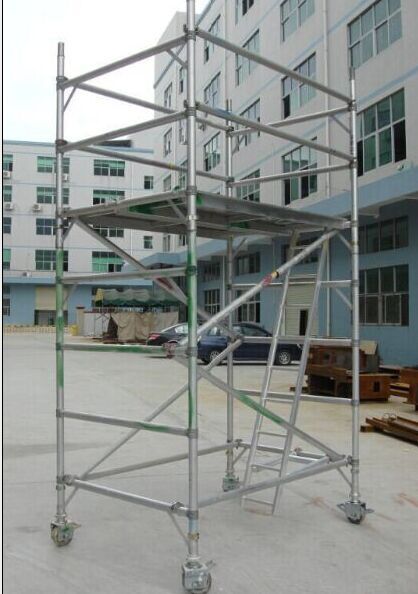
Mobile scaffolding mainly includes aluminum mobile scaffolding, Baker scaffold, or Mini scaffold.
Shoring Scaffolding
Shoring scaffolding is a structural support system commonly used in formwork systems, typically requiring heavy-duty frames and steel props to bear loads. Heavy-duty frames have larger diameters and thicknesses compared to regular frames to support heavier loads. Additionally, diagonal braces, screw jacks, base plates, and J heads are needed to support the structure. As heavy-duty frames are thicker than regular frames, aluminum frames effectively reduce weight, making them a favorable choice.
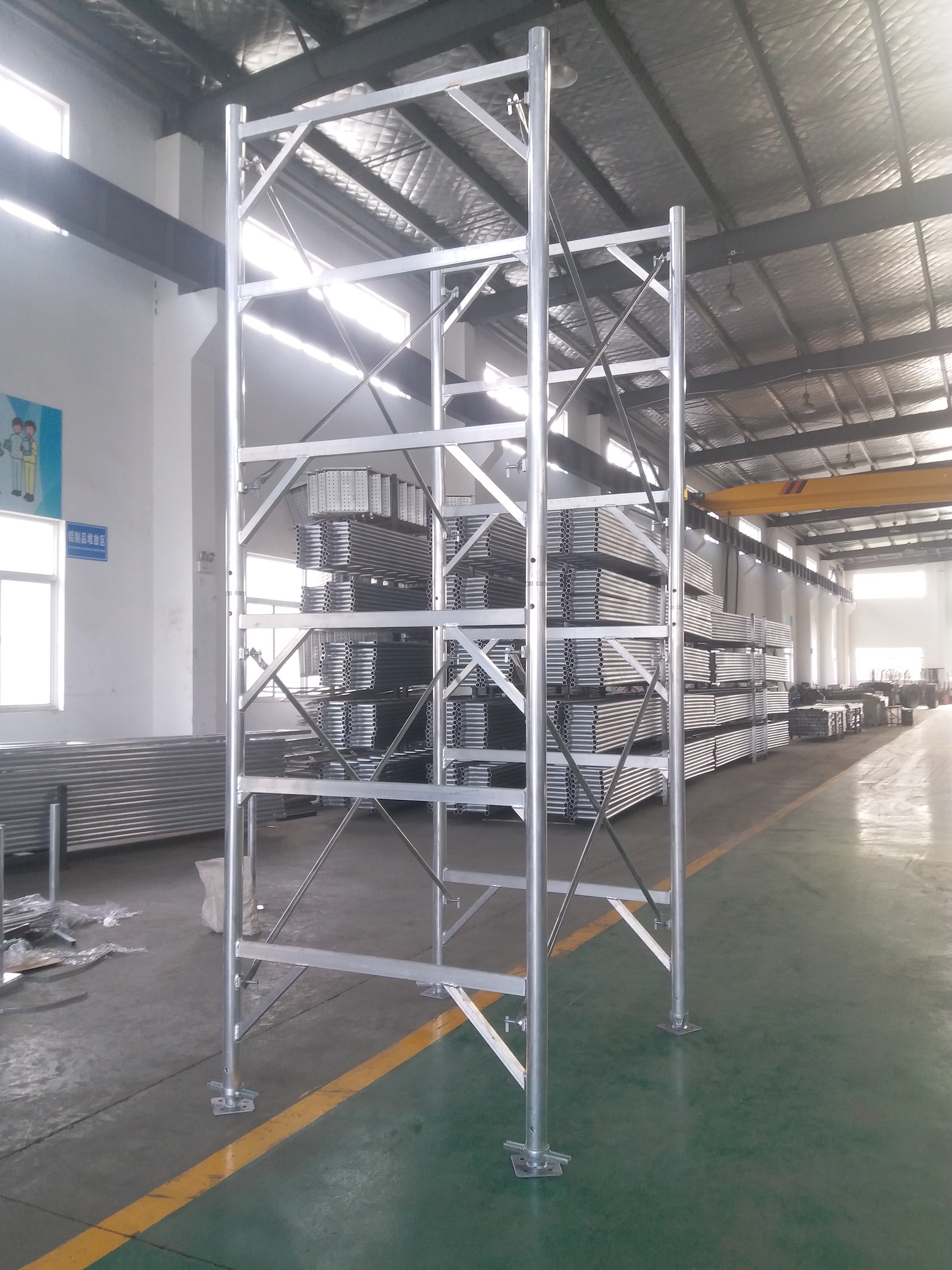
Steel props are categorized as light-duty, medium-duty, and heavy-duty, with increasing load-bearing capacities one by one. You can choose the right one based on project requirements.
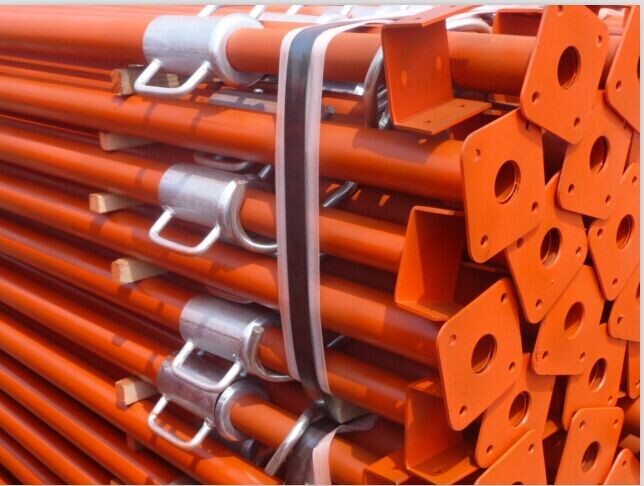


Suspended Scaffolding
Suspended scaffolding is a type of scaffold suspended at the top of a building, typically consisting of a platform suspended from above by ropes and stirrups. Depending on the situation, sometimes motors are needed to raise or lower the platform.
There are various types of suspended scaffolding, including catenary, two-point (swinging stage), float, interior, multi-level, multi-point adjustable, single-point adjustable, and needle beam styles.
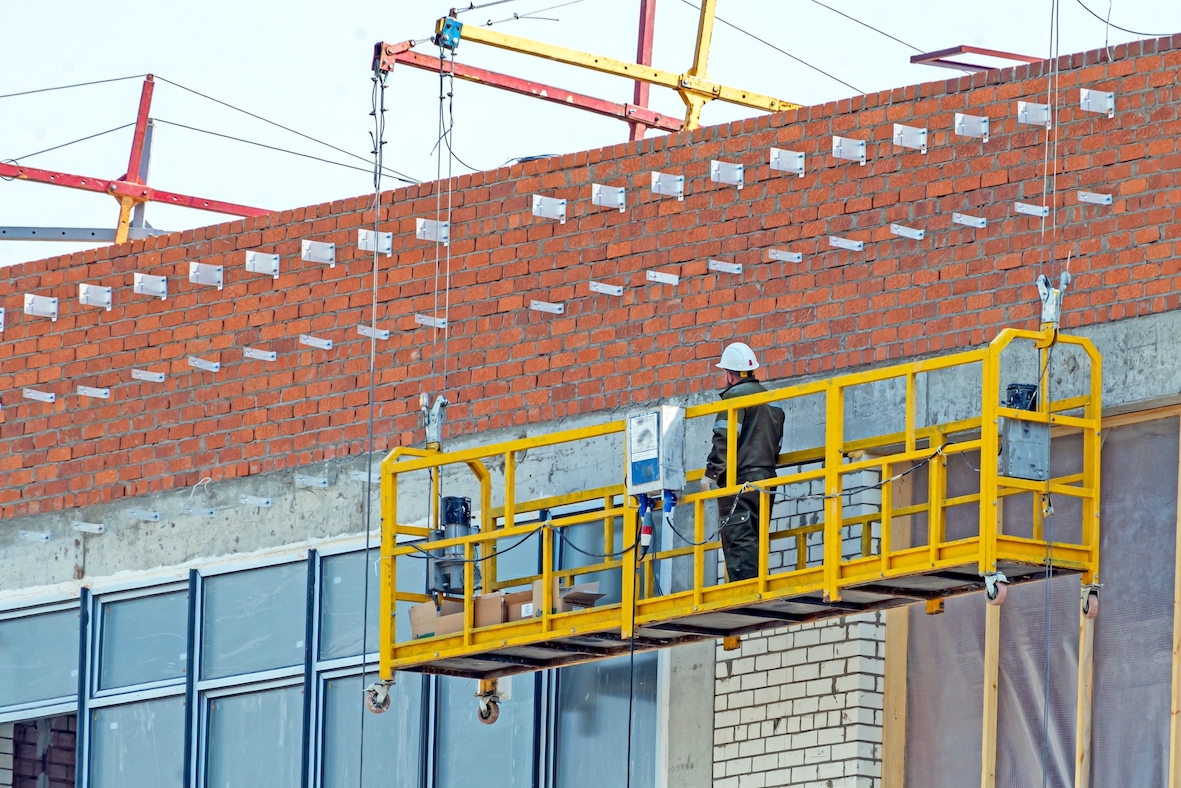
Suspended scaffolding is primarily used for workers to ascend and descend to perform tasks at different heights, such as window cleaning, high-rise building maintenance, and high-rise building painting. This is why you often see it on skyscrapers and bridges.
Trestle Scaffolding
The trestle scaffolding, also known as A-frame scaffold, is assembled from prefabricated A frames, braces, and accessories. It is commonly used by masons, plasterers, and painters for general renovation and finishing work.
Typical sizes include 4' or 6', with surface treatments such as painting or powder coating.
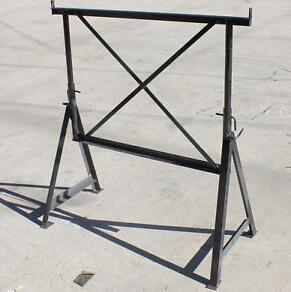
Facade Scaffolding
Facade scaffolding is a scaffolding system primarily used for external walls. This term is predominantly used in some European countries. The facades of buildings and structures can consist of brick, wood, concrete, glass, steel, or curtain walls. Construction workers can carry out tasks like masonry, plastering, painting, maintenance, and roofing.
Facade scaffolding is mainly categorized into European Layher frames and all-round/ ringlock scaffolding systems, which can bear high loading capacity.
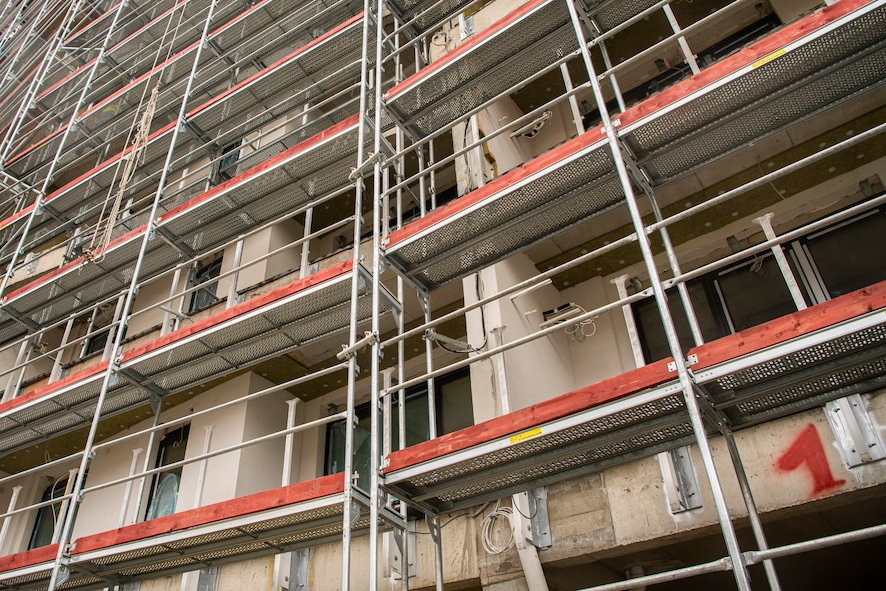
Fiberglass Scaffolding
Fiberglass scaffolding is a type of scaffolding made of fiberglass materials.It is light, non-conductive, and resistant to chemical corrosion. It's suitable for tasks in specific situations, to reduce the risk of electric shock. Its corrosion resistance makes it an ideal climbing solution for semiconductor manufacturing, hospitals, or other environments frequently exposed to chemical products.
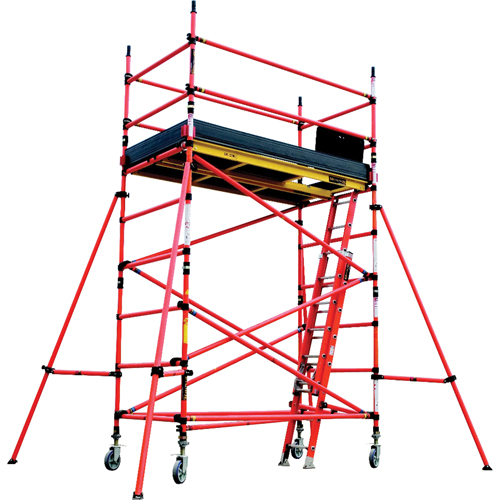
Conclusion
Scaffolding comes in many types with differences in appearance, load-bearing capacity, and application scenarios. Therefore,it’s crucial to choose the right scaffolding based on the project's specific needs.
Nanjing Tuopeng Scaffold is a supplier dedicated to providing various scaffolding solutions to global clients. Our featured products include system scaffolding, tube and clamp scaffolding, frame and brace scaffolding, shoring scaffolding, and steel props. If you are a scaffolding manufacturer, we can also supply you with a variety of scaffolding accessories to reduce production costs and enhance efficiency. Our accessories not only meet standard requirements but can also be custom-produced based on your designs. Feel free to contact us via phone/WhatsApp at +86 18761811774 or email us at info@tp-scaffold.com.


























